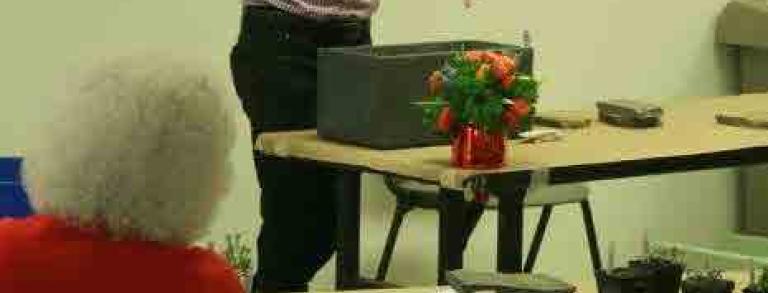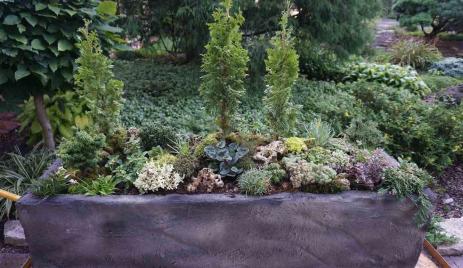NEARLY EVERY GARDENING organization is facing the same problems: an aging membership and difficulty recruiting new members. That is true for us in NARGS, just as it is for garden clubs and plant societies of all types. For one of my day jobs, I travel around North America and give presentations for a wide range of gardening organizations. Despite the general pattern of decline, many groups I talk to are thriving and bringing in new members. I’ve made a habit of taking notes on what seems to be working for these organizations and asking the leaders what they’ve done that has been successful. What works for one group may not work for everyone, but here are some ideas that might help each local chapter of NARGS boost membership and keep thriving for years to come.
Your Website
I’m a millennial. And for people of my generation, if it isn’t online, it doesn’t exist. Websites don’t need to be fancy, but they do need to be up-to-date. If I search for your chapter and get a site that says “Next meeting date: July 10th, 2015” I’m going to assume the group no longer exists. Make sure your listing on the NARGS website and your local chapter website list upcoming meetings and contact info for current leaders.
Social Media
Social media can be an effective and free way to reach potential new members. Facebook is the biggest network, but Instagram is more popular with younger users and is becoming the most plant-centric of the social media sites.
On Facebook, it is critical to remember that the more people who like, comment, or share a post, the more other people will see it, and the effect is exponential. On the NARGS Facebook page, a post that other people shared three times was seen by about 500 people. A post that was shared 15 times reached 4,000 people. Add just ten more shares, to 25, and a post reached a staggering 37,000 people. That means if all of us, from the national organization to local chapters to individual members, like, comment on, and share each other’s posts we can together reach an enormous audience. Each of you can have a huge impact here, as each additional share multiplies the number of people reached. If you are active on Facebook, take the time each day to check out the national and local NARGS pages, make a comment, and click those “like” and “share” buttons. And if you see a friend posting a great picture of a new trough or the seeds they just got from the Seed Exchange, share that too!
On Instagram, the most important feature is the hashtag. Hashtags can be used on Facebook as well, but they are not as important or popular there. When you post, if you type “#” and then any word, like rockgardening, it will become a link called a hashtag. If I post a picture of my garden and write #rockgardening in my description, anyone looking at that post can click on the hashtag and be shown all the other posts using that same hashtag. So, if we all start using #rockgardening on our posts, anyone interested in what we’re posting can click on that hashtag to discover the rest of the rock gardening community and start learning what NARGS is. Instagram also recommends popular hashtags to people to check out, so the more of us that start using the same hashtags, the more new people we’ll reach. I’d recommend that we all start using #rockgardening, #nargs, and that local chapters each decide on their own hashtag for their members to use. There is no limit on the number of hashtags you can use, so do use other hashtags to help connect to the larger community of gardeners on Instagram.
Whatever the social media platform, be sure to post not just pictures of pretty plants, but also images that show the benefits of being a part
of NARGS. Share pictures of your local chapter meeting, seeds from the seed exchange, or your favorite article in the Quarterly. That way, new people will not only learn what rock gardening is but why they should join NARGS and their local chapter.
In Real Life
Don’t just rely on the web. If you are having an event, let the local newspaper know and see if they’ll give you some coverage. Coffee shops and public libraries often have spaces where you can post announcements for upcoming events. The more places you put announcements, the more people you have a chance to reach.
Plant sales
Everyone loves a good plant sale. You get cool plants, it raises money for the organization, and it is a great way to bring in prospective members. Make sure to hold the sale in as public a space as possible so that non-members will be able to stop by. Local botanic gardens are a great option if you can get permission. Always give a discount on plants to members so that big spenders will decide to join just for the discount. Once people join, they’ll fall in love and be hooked for life.
If you have a state fair or a flower show in your area, plant up a beautiful trough and show it off. This can be incredibly effective because people can see what amazing gardens you create. If a picture is worth 1,000 words, a beautiful trough is easily worth 10,000. Betty Ann Addison, from the Minnesota chapter, told me, “I made a trough for the State Fair that was 4 feet (1.2 m) long and lightweight, like 15 pounds (7 kg). Our chapter was there only two days, but we collected 15 people who would like to join us. Isn’t that great?” To get the most out of your display, make sure to hand out fliers with information about joining, or, even better, an upcoming class or workshop where they can learn to make something like the display they are seeing in front of them.
Teach classes
One of the most successful ways to reach new members is to have workshops and classes. Joining a plant society can feel like a big commitment of time to people, and it may not be clear to them what they will get out of it. But a class is simple and straightforward, and chances are they’ll have so much fun that they’ll want to join your chapter. In my experience, the most popular classes are on making hypertufa troughs and planting them. Be sure to use plain English in advertising the classes. “Plant an alpine trough” doesn’t mean much to the average non-gardener. “Plant a container garden for your patio” will reach a lot more people. The best advertising is an actual planted trough with a big sign that says “Learn how to make one of these!” To reach the most potential members, hold the classes in a public space like a botanic garden, library, or popular nursery rather than at a member’s home. Don’t be afraid to charge people a fee for plants and materials, plus a little profit for the chapter. In my experience, hands-on workshops where people get to take home a planted trough at the end sell out quickly even if they are a bit expensive.
Make meetings fun
If you want people to join your local chapter and keep coming back, make sure they enjoy the meetings. I honestly think the best part of any meeting is the informal socialization and plant talk. The whole point of joining a society is to connect with other plant-loving people, so make sure nothing gets in the way of that. Provide some food and maybe even a couple of bottles of wine. Keep the presentations short and fun. Perhaps most importantly, remember that no one wants to sit through a treasurers report or have to second a motion to accept the minutes from the last meeting. Yes, you have to do those things, but do them at a different time and place from your regular meetings. I’ve given many presentations where afterward everyone was talking and having a good time only to be interrupted by the onset of the business meeting, putting half the room to sleep and sending the other half home. Keep announcements and business at your regular meetings short and sweet and do the tedious, boring stuff at another time.
Finally, I hope each of the local chapters can use the Quarterly to keep learning from each other. If you have done something
that works well for your local chapter, please send me an e-mail ([email protected]) with some details and maybe a couple of pictures so I can pass it on to the other chapters in future issues of the Quarterly.
NARGS has so much to offer gardeners of all ages and experience levels. If we can take some small steps to get the word out and
better communicate what we are all about we’ll be able to boost our membership and keep this organization we all love so much thriving for many years to come.


